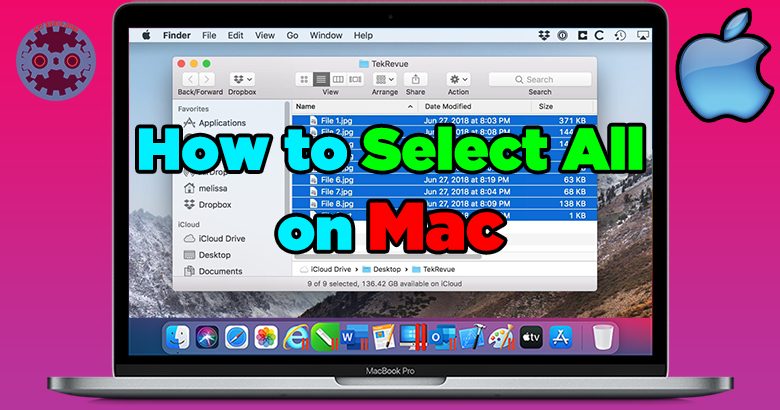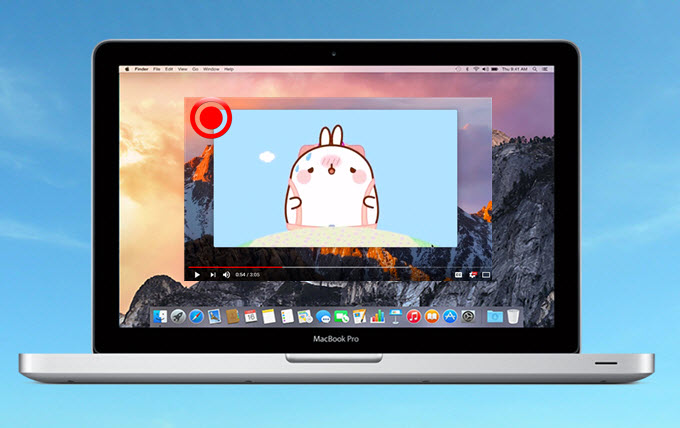Looking to connect your iPhone to your MacBook without using a USB cable? Well, you’re in luck! We’ve got a simple solution for you. Connecting your iPhone to your MacBook wirelessly can be a convenient and hassle-free way to transfer files, sync data, and even mirror your iPhone’s screen. In this article, we’ll walk you through the step-by-step process of how to connect your iPhone to your MacBook without USB. So, whether you’re tired of dealing with tangled cables or just prefer the convenience of a wireless connection, read on to learn how to connect your iPhone to your MacBook without USB.
Table of Contents
- 1 How to Connect iPhone to MacBook Without USB
- 2 Frequently Asked Questions
- 2.1 How can I connect my iPhone to a MacBook without using a USB cable?
- 2.2 Can I connect my iPhone to a MacBook using Bluetooth?
- 2.3 Is it possible to connect my iPhone to a MacBook using Wi-Fi?
- 2.4 Can I connect my iPhone to a MacBook using AirDrop?
- 2.5 What is the Handoff feature, and can I use it to connect my iPhone to a MacBook?
- 2.6 Are there any apps or software that can help connect my iPhone to a MacBook wirelessly?
- 3 Final Thoughts
How to Connect iPhone to MacBook Without USB
Connecting your iPhone to your MacBook without using a USB cable can be a convenient and efficient way to transfer data, access files, or even mirror your iPhone’s screen. In this article, we will explore various methods and applications that enable you to establish a connection between your iPhone and MacBook wirelessly. Whether you want to transfer photos, sync music, or even use your iPhone as a webcam, we’ve got you covered. Let’s dive in!
1. Connecting via AirDrop
AirDrop is a built-in feature on both iPhones and MacBooks that allows you to wirelessly transfer files between Apple devices. To connect your iPhone to your MacBook using AirDrop, follow these steps:
- Make sure both your iPhone and MacBook are connected to the same Wi-Fi network.
- On your iPhone, open the Control Center by swiping down from the top-right corner of the screen (iPhone X or later) or swiping up from the bottom of the screen (iPhone 8 or earlier).
- Press and hold the network module (Wi-Fi, Bluetooth, etc.) to reveal more options.
- Tap on the AirDrop icon.
- Choose “Contacts Only” or “Everyone” to determine who can see your device in AirDrop.
- On your MacBook, open a Finder window.
- Click on “AirDrop” in the sidebar.
- Your iPhone should appear in the AirDrop window on your MacBook. Simply drag and drop files between the devices to transfer them.
2. Syncing with iCloud
If you prefer to have your iPhone and MacBook constantly in sync, using iCloud is an excellent option. iCloud allows you to seamlessly share photos, documents, notes, and more across all your Apple devices. To connect your iPhone to your MacBook using iCloud, follow these steps:
- Make sure both your iPhone and MacBook are connected to the internet.
- On your iPhone, go to “Settings” and tap on your Apple ID at the top of the screen.
- Tap on “iCloud” and make sure the desired features (such as Photos, Contacts, Notes, etc.) are enabled.
- On your MacBook, click on the Apple menu in the top-left corner of the screen and choose “System Preferences.”
- Select “iCloud” and sign in with the same Apple ID used on your iPhone.
- Make sure the checkboxes next to the desired features are checked.
- Your iPhone data will now sync with your MacBook via iCloud, allowing you to access and manage your files seamlessly.
3. Using a Third-Party Application: Reflector
Reflector is a third-party application that enables you to mirror your iPhone’s screen on your MacBook wirelessly. This can be useful for presentations, gaming, or simply viewing your iPhone’s screen on a larger display. Follow these steps to connect your iPhone to your MacBook using Reflector:
- Download and install Reflector on your MacBook from the official website (www.airsquirrels.com/reflector).
- Make sure your iPhone and MacBook are connected to the same Wi-Fi network.
- On your iPhone, open the Control Center and tap on “Screen Mirroring” or “AirPlay Mirroring,” depending on your iOS version.
- A list of available devices will appear. Tap on your MacBook to establish the connection.
- Your iPhone’s screen will now be mirrored on your MacBook, allowing you to interact with your iPhone using your MacBook’s mouse and keyboard.
4. Using a Third-Party Application: Documents by Readdle
Documents by Readdle is a versatile file management application that also provides a built-in web browser, media player, and document editor. Among its many features, Documents allows you to wirelessly transfer files between your iPhone and MacBook. Follow these steps to connect your iPhone to your MacBook using Documents by Readdle:
- Download and install Documents by Readdle from the App Store on your iPhone.
- Download and install Documents by Readdle from the official website (www.readdle.com/documents) on your MacBook.
- Make sure both your iPhone and MacBook are connected to the same Wi-Fi network.
- Open Documents on your iPhone and tap on the “Wi-Fi Drive” icon in the sidebar.
- A web address will appear. Open a web browser on your MacBook and enter the web address.
- You will now have access to your iPhone’s files on your MacBook, allowing you to transfer files in both directions.
5. Using a Third-Party Application: AirDroid
AirDroid is a popular application that enables you to wirelessly manage and control your Android device from your computer. Although primarily designed for Android devices, AirDroid also offers limited support for iOS devices. Follow these steps to connect your iPhone to your MacBook using AirDroid:
- Download and install AirDroid from the App Store on your iPhone.
- Create an account and sign in to AirDroid on your iPhone.
- Open a web browser on your MacBook and go to www.airdroid.com.
- Sign in to AirDroid using the same account credentials used on your iPhone.
- Follow the on-screen instructions to establish a connection between your iPhone and MacBook.
- You can now access and manage your iPhone’s files, messages, contacts, and more from your MacBook.
Connecting your iPhone to your MacBook without using a USB cable opens up a world of possibilities for seamless file transfers, screen mirroring, and device management. Whether you choose to use built-in features like AirDrop and iCloud or third-party applications like Reflector, Documents by Readdle, or AirDroid, the process is straightforward and efficient. Experiment with these different methods to find the one that fits your needs best. Enjoy the convenience of a wireless connection and elevate your productivity to new heights!
All iPhones: How to Transfer Files Wirelessly to MacBook (No Cables Needed)
Frequently Asked Questions
How can I connect my iPhone to a MacBook without using a USB cable?
There are several methods to connect your iPhone to a MacBook without relying on a USB cable:
Can I connect my iPhone to a MacBook using Bluetooth?
Yes, you can connect your iPhone to a MacBook using Bluetooth. Turn on Bluetooth on both devices, make sure they are visible to each other, and then pair them. Once they are paired, you can transfer data wirelessly.
Is it possible to connect my iPhone to a MacBook using Wi-Fi?
Yes, it is possible to connect your iPhone to a MacBook using Wi-Fi. Ensure that both devices are connected to the same Wi-Fi network, and then enable Wi-Fi syncing on your iPhone and MacBook. This will allow you to sync files, transfer data, and even use features like AirDrop.
Can I connect my iPhone to a MacBook using AirDrop?
Yes, you can connect your iPhone to a MacBook using AirDrop. On both devices, make sure AirDrop is enabled in the Control Center or Finder menu. Then, select the file you want to share on your iPhone, tap the share icon, and choose the MacBook as the destination.
What is the Handoff feature, and can I use it to connect my iPhone to a MacBook?
The Handoff feature allows you to seamlessly continue tasks between your iPhone and MacBook. To use it, ensure both devices are signed in to the same iCloud account and have Bluetooth and Wi-Fi enabled. When working on an app or browsing a website on your iPhone, you can easily switch to your MacBook and vice versa by clicking on the Handoff icon on the dock.
Are there any apps or software that can help connect my iPhone to a MacBook wirelessly?
Yes, there are third-party apps and software available that can assist in establishing a wireless connection between your iPhone and MacBook. Some popular options include Reflector, LonelyScreen, and AirServer. These apps allow you to mirror your iPhone’s screen on your MacBook, making it convenient for presentations or media consumption.
Final Thoughts
To connect your iPhone to your MacBook without using a USB cable, there are a few methods you can try. One option is to use AirDrop, which allows you to wirelessly transfer files between your devices. Another option is to use iCloud, which enables you to sync your data across your devices. Additionally, you can use third-party apps like SyncMate or AnyTrans to establish a wireless connection between your iPhone and MacBook. By following these methods, you can easily connect your iPhone to your MacBook without the need for a USB cable. How to connect iPhone to MacBook without USB.

